In This Issue
Message From the
Executive Director
Vitiligo and Celiac Disease:
Is There a Link?
What's On Your Mind?
- Is my light treatment working?
The pink goes away after a day.
- What does new pigment look like?
Medical News Updates
- Safety of Long-Term
Vitiligo Treatments
- Family History of both Vitiligo
and Psoriasis Increases Risk of
Developing Other Diseases
Research & Clinical Trials
- New Vitiligo Clinical Trial
in MA - for men
- Volunteers Needed from
USA and Canada!
- Patients and Controls
Needed for Vitiligo Survey
Camp Discovery
Bibliography
Earn funding for VSI
When you Shop!
View Past Newsletters
VSI Medical and Scientific
Advisory Committee
Pearl E. Grimes, M.D., Committee Chair
Ted A. Grossbart, Ph.D.
Sancy A. Leachman, M.D.
I. Caroline Le Poole Ph.D.
Mauro Picardo, M.D.
Nanette B. Silverberg, M.D.
Richard A. Spritz, M.D.
Alain Taieb, M.D., Ph.D.
Wiete Westerhof MD, PhD.
For more information
on VSI's MSAC Click Here |
| |
| |
How to Log In:
Have you have forgotten your Login ID and/or Password?
No Problem!
Just go to the
Community Page
Scroll down to
the login box.
LOOK UNDERNEATH!
You'll see instructions to have them sent to the email address on your account.
|
|
How to Log In:
Have you have forgotten your Login ID and/or Password?
No Problem!
Just go to the
Community Page
Scroll down to
the login box.
LOOK UNDERNEATH!
You'll see instructions to have them sent to the email address on your account.
|
|
| |
How to Log In:
Have you have forgotten your Login ID and/or Password?
No Problem!
Just go to the
Community Page
Scroll down to
the login box.
LOOK UNDERNEATH!
You'll see instructions to have them sent to the email address on your account.
|
|
| |
| Contact Us
Online
VitiligoSupport.org
Email Contact Us
Postal Mail Address
Vitiligo Support International
P.O. Box 3565
Lynchburg Va 24503
Phone
(434) 326-5380 |
|
Message From the Executive Director
Dear Members and Friends of VSI,
Advances in vitiligo genetics research have confirmed that non-segmental vitiligo (NSV)
is an autoimmune disease and that it shares one or more genes with
other autoimmune disorders, including celiac disease, rheumatoid
arthritis, Type 1 diabetes, lupus, Graves’ disease, Addison’s disease,
psoriasis, inflammatory bowel disease, Hashimoto’s thyroiditis, and multiple sclerosis. What does this gene linkage mean?
For the scientist, it provides clues as to the biochemical pathways that are involved in the expression of vitiligo. These pathways become potential targets for new therapies aimed at stopping the disease process.
For the individual, it raises the question as to whether they have a greater chance of developing one of these additional autoimmune disorders. If they do face a greater risk, what does this mean for them?
In this newsletter we focus on celiac disease (CD), one of the autoimmune disorders linked to vitiligo and one of great interest to many people with vitiligo. Many of our members contact us asking if they are at greater risk of developing CD. Two recent small studies raise the possibility that they may be.
We thank the many volunteers whose participation made these studies possible. Without your willingness to become involved, this research would not have happened. Opportunities to volunteer for research studies are listed at the end of this newsletter. Even as one individual, you can make a difference. If all of us act, believing in the “power of one,” future generations will benefit from what we do today.
Sincerely,

Jackie Gardner
Executive Director
Did your vitiligo itch
before depigmenting?
If so, click here |
After many requests, PayPal is here!
You can use our new PayPal “easy button” located below and also on the website.
This does not require a PayPal account, VSI registration, account or login!
All credit cards are accepted.
Do you enjoy reading our newsletters?
VSI’s quarterly newsletters are just one of the many resources
we provide for the vitiligo community. Increasingly called upon to
expand our services, our capacity to serve and ability to grow is
curtailed only by our ability to fund such improvements.
We would like to express our gratitude for the support of the vitiligo community and its partners - without it, we would not be here for you.
Click Below to Make a General Donation with PayPal.

If you are not a Supporting Member,
Please consider joining today! Click Here to Join.
Already a Supporting Member?
Please consider a contribution today by clicking here.
At this time VSI is unable to integrate PayPal with the website Supporting Membership function; however, we can process this manually. If you would like to upgrade to or renew a Supporting-Level Membership using PayPal, please contact VSI at [email protected] |
Vitiligo and Celiac Disease: Is There a Link?
Is there a connection between celiac disease (CD) and vitiligo? We are frequently asked this question by people who have both conditions. Some scientists have raised this question as well, publishing the results of two small studies that looked into the possibility. Their data pointing to a possible relationship is consistent with the fact that both diseases are genetic autoimmune disorders and share a link to autoimmune thyroid disease.
What is celiac disease?
 People with CD cannot tolerate gluten, a very common gluey protein found in such grains as wheat, barley and rye. Other grains containing gluten are bulgur, durham, farina, graham flour, kamut, matzo meal, semolina and triticale. It is pervasive in a wide range of foods, including food additives in certain condiments such as ketchup. It may also be found in everyday products such as medicines, vitamins, and lip balms. People with CD cannot tolerate gluten, a very common gluey protein found in such grains as wheat, barley and rye. Other grains containing gluten are bulgur, durham, farina, graham flour, kamut, matzo meal, semolina and triticale. It is pervasive in a wide range of foods, including food additives in certain condiments such as ketchup. It may also be found in everyday products such as medicines, vitamins, and lip balms.
The gluten proteins wreak havoc with the immune systems of people with CD once they’re absorbed into the small intestine. These proteins block the small intestine’s ability to manufacture digestive enzymes and absorb nutrients from food. People without celiac disease can also be intolerant to gluten.
To diagnose CD, a blood test is done to measure the levels of antibodies to gluten. If blood tests and symptoms suggest CD, a biopsy of the small intestine may then be performed to confirm the diagnosis.
Celiac Disease Facts
Celiac disease is a genetic autoimmune disease that affects more than 3 million American adults and children, about 1% of the American population. Celiac disease may affect patients of any age; however, the incidence peaks in early childhood and in the fourth and fifth decades.
Symptoms of celiac disease vary, but the classic symptoms include chronic diarrhea, fatty stools, abdominal pain and distension, weight loss, anorexia, and nutritional deficiencies, particularly of iron, folate, calcium and vitamin D.
Children with CD tend to have more severe symptoms than adults, often leading to growth retardation, malnutrition leading to significant weight-loss and osteoporosis. Digestive symptoms are more common in infants and young children. Irritability is another common symptom in children.
A number of autoimmune conditions have been reported to be associated with CD. Many skin manifestations have also been associated. See the charts below for additional information. |
Is there a connection between CD and vitiligo?
The data pointing to this specific connection has changed somewhat over time. It is only in recent years that science has begun to reveal the complex interrelationships between some autoimmune diseases. As new genes in the field of autoimmunity continue to be discovered and identified, connections that were previously unknown have begun to surface. While older research showed little or no evidence of a connection, data from more recently-published studies seems to suggest a possible link.
In one such study, the investigating team at a Belgian hospital was attempting to measure the prevalence of CD in a group of 400 patients with type 1 diabetes, also an autoimmune condition. During the course of the study, they observed that vitiligo was more common among those diabetes patients who also had CD.
 In another study, university researchers in Turkey looked at 55 children and adolescents diagnosed with CD over a six-year period to see if there were any skin conditions associated with CD. They observed a higher than normal prevalence rate of several skin conditions, including vitiligo. Over 9% of the CD patients had vitiligo, a greater frequency than seen in the general population (½ - 1%). Interestingly, the vitiligo appeared only in those children and adolescents who were not following a strict gluten-free diet. In fact, none of the skin abnormalities observed in the CD study patients were observed in those following a gluten-free diet. In another study, university researchers in Turkey looked at 55 children and adolescents diagnosed with CD over a six-year period to see if there were any skin conditions associated with CD. They observed a higher than normal prevalence rate of several skin conditions, including vitiligo. Over 9% of the CD patients had vitiligo, a greater frequency than seen in the general population (½ - 1%). Interestingly, the vitiligo appeared only in those children and adolescents who were not following a strict gluten-free diet. In fact, none of the skin abnormalities observed in the CD study patients were observed in those following a gluten-free diet.
This same Turkish team of scientists did a second study in which they screened 61 children and adults with vitiligo to see if there was a higher prevalence of CD. They again found an above-average incidence of CD in the vitiligo patients, diagnosing 11 vitiligo patients (18%) with CD, while the rate of incidence in the general population is about 1%.
Anecdotally, various people with vitiligo have reported being helped by a gluten-free diet, but, in the absence of a scientific review of these reports, we cannot know if the improvement was or was not due to other factors. The relationship of gluten intolerance to other autoimmune diseases has only become the subject of mainstream discussion in recent years. As research continues, evidence of even more connections may surface. Heightened sensitivity to the whole topic most likely led to one doctor’s recent reported observation of a young girl’s vitiligo improving following her adoption of a gluten-free diet.
The patient was a 9-year-old girl affected by generalized vitiligo, with typical depigmented lesions on her face, trunk and limbs. She had not responded to vitiligo treatment for over a year, and she had a history of well-controlled hypothyroidism for two years. After one year of a gluten-free diet and no active treatment for vitiligo, her depigmented skin progressively repigmented, and maintained its pigmentation seven years after initiating the gluten-free diet.
This young woman's experience does not provide definitive proof that gluten intolerance and vitiligo are connected. There may have been one or more other factors involved that we have yet to discover. However, this doctor's observation provides additional evidence that such a scientific investigation is warranted.
CD Symptoms in Children and Adolescents
| Chronic diarrhea | Weight Loss |
| Anorexia |
Fatigue |
| Impaired growth |
Short stature |
| Fever |
Vomiting |
| Abdominal distension |
| Edema in lower extremities - (swelling) |
| Arthralgia - (severe pain in a joint) |
| Myalgia - (muscular pain or tenderness) |
| Skin Manifestations (quite extensive) Click Here to view |
|
What could connect CD and vitiligo?
An autoimmune link?
CD’s potential to trigger underlying autoimmune disease such as vitiligo was put forward in a recent study. Researchers in a study of 172 patients with autoimmune thyroid disease found that 3.4% of these patients also had celiac disease, a higher percentage than the 0.6% and 0.25% found in the study’s two control groups. The study concluded that undiagnosed celiac disease might actually be part of the process that triggers an underlying autoimmune disease such as autoimmune thyroiditis. In their findings, they wrote: “We believe that undiagnosed celiac disease can cause other disorders by switching on some as yet unknown immunological mechanism.”
 CD has been reported to be associated with several other autoimmune disorders, including Type 1 diabetes, autoimmune liver disease, rheumatoid arthritis, Addison’s disease, and Sjogren’s syndrome. Could CD also trigger vitiligo, another autoimmune disease? It is a reasonable question to ask given what we know to date. CD has been reported to be associated with several other autoimmune disorders, including Type 1 diabetes, autoimmune liver disease, rheumatoid arthritis, Addison’s disease, and Sjogren’s syndrome. Could CD also trigger vitiligo, another autoimmune disease? It is a reasonable question to ask given what we know to date.
A thyroid disease link?
Those with vitiligo have been shown to have a significantly higher incidence of autoimmune thyroid disease than the normal population. It’s actually the most common autoimmune disease among vitiligo patients and/or their family members. Autoimmune thyroid disease also occurs in the CD population at a higher rate than in the general population. Could vitiligo and CD be connected through a possible common gene also shared with thyroid disease?
A common gene link?
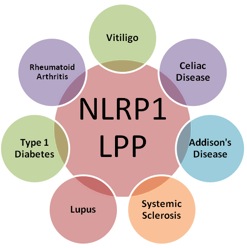 We know from federally-funded genetics research that the gene
NLRP1 (formerly known as NALP1), has been confirmed as being
associated with vitiligo, as well as with celiac disease, Addison’s
disease, systemic sclerosis, and lupus, and with type 1 diabetes
in two out of three studies. We recently learned from a newly released study about another common gene, LPP, which is associated with vitiligo, celiac disease and rheumatoid arthritis. Perhaps these genes may be involved in mediating vitiligo and CD. We know from federally-funded genetics research that the gene
NLRP1 (formerly known as NALP1), has been confirmed as being
associated with vitiligo, as well as with celiac disease, Addison’s
disease, systemic sclerosis, and lupus, and with type 1 diabetes
in two out of three studies. We recently learned from a newly released study about another common gene, LPP, which is associated with vitiligo, celiac disease and rheumatoid arthritis. Perhaps these genes may be involved in mediating vitiligo and CD.
A stress link?
 Another consideration for why one might see the onset or worsening of vitiligo in an individual experiencing a flare-up of CD is the role stress can play on the immune system. There are well-established studies showing that individuals who are under chronic stress (emotional and/or physical) experience more severe and more frequent viral infections (common cold, flu); have a lower take-rate of vaccine (flu & hepatitis); and show prolonged wound healing. Can this type of stress, which is known to weaken the immune system, also leave it more susceptible to the negative effects of other underlying conditions? Another consideration for why one might see the onset or worsening of vitiligo in an individual experiencing a flare-up of CD is the role stress can play on the immune system. There are well-established studies showing that individuals who are under chronic stress (emotional and/or physical) experience more severe and more frequent viral infections (common cold, flu); have a lower take-rate of vaccine (flu & hepatitis); and show prolonged wound healing. Can this type of stress, which is known to weaken the immune system, also leave it more susceptible to the negative effects of other underlying conditions?
Over the years, many individuals with autoimmune disease have reported a significant stress factor such as a death in the family, a bout with an unrelated illness, or other trauma, such as an automobile accident, preceding the onset, or worsening of their autoimmune diseases.
New studies suggest a few mechanisms by which this might occur. Dr. Esther Sternberg of the National Institute of Mental Health shared her insights on this with VSI, saying, “…that in chronic stress, physiological burn-out can occur, in which after a prolonged period of running at peak, the hormonal stress response fails, and too little anti-inflammatory glucocorticoids are released to shut off inflammation.” (Inflammation is a mechanism by which we fight foreign invaders and repair damaged tissue. Glucocorticoids are various steroid hormones produced by the body’s adrenal glands that inhibit the inflammatory process. If not controlled, chronic inflammation will damage the body’s healthy tissue.)
She went on to say, “Another intriguing and quite new hypothesis for which biological evidence is beginning to be gathered is that the problem may be at the level of the glucocorticoid receptor, the communication link between the hormones and the immune cells. In this scenario, even if the individual is making enough cortisol, an important glucocorticoid hormone also popularly known as the “stress hormone," immune cells are unable to respond to the anti-inflammatory effects of this glucocorticoid, leading to exacerbation of underlying autoimmune disease.”
What to keep in mind?
This does not mean that stress alone causes these autoimmune/inflammatory diseases. The person in question would first have to carry the genes for the specific autoimmune diseases. At least 20 gene regions on 15 different chromosomes are associated with predisposition to autoimmune disease in rodents and humans. Whether stress will precipitate or worsen such conditions is only one of many potential factors to consider.
We are often asked by parents if CD-like symptoms their children are experiencing could be related to vitiligo. While we must learn more to confirm a direct link between the two diseases, those affected by vitiligo should be aware of the possibilities.
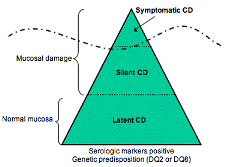 Research has shown that a significant percentage of children and adults who tested positive for celiac disease had minimal or no symptoms prior to being tested. However, familiarizing yourself with the symptoms is very important as you may otherwise miss important clues that could lead to early diagnosis. Research has shown that a significant percentage of children and adults who tested positive for celiac disease had minimal or no symptoms prior to being tested. However, familiarizing yourself with the symptoms is very important as you may otherwise miss important clues that could lead to early diagnosis.
If you feel you or your child have experienced even mild symptoms of CD or gluten intolerance, you might discuss the advisability of being tested for CD with your physician.
There is a vast array of information available about CD and gluten intolerance. A good place to start to learn more about CD, its symptoms and its treatments is the National Institute of Health’s National Digestive Diseases Information Clearinghouse (NDDIC) at www.digestive.niddk.nih.gov. We have provided a general description of CD symptoms for adults below.
CD Symptoms in Adults
- Unexplained iron-deficiency anemia
- Fatigue
- Bone or joint pain
- Arthritis
- Bone loss or osteoporosis
- Depression or anxiety
- Tingling numbness in the hands and feet
- Seizures
- Missed menstrual periods
- Infertility or recurrent miscarriage
- Canker sores inside the mouth
- An itchy skin rash called dermatitis herpatiformis
- Chronic diarrhea
- Short stature
- Impaired growth
Source: National Digestive Diseases
Information Clearinghouse (NDDIC) |

VSI was the inspiration of vitiligo patients who believed in the power of collective action. They believed the “patient voice” could bring about change. They knew access to the collective perspective and experience of the vitiligo patient community is what would enable the researcher to understand, the insurer to expand coverage, and the policy maker to support better care.
VSI’s mission is to make sure the collective “patient voice” of the vitiligo community is heard. It is critical to bringing about the change that leads to the development of effective treatments and, ultimately, a permanent method of control or cure.
HOW CAN YOU HELP?
The genetic discoveries we report to you would not be
possible without the dedication of the scientists who continue
their work on the genetic studies.
Each link they uncover provides another clue to the biological pathways of vitiligo, which is a critical step toward finding better treatments, and the cure we all hope for.
These studies cannot continue
without the participation of the patient volunteers.
Click here for information on volunteer opportunities |


What's On Your Mind?
Q. I started NB-UVB light treatments and was so encouraged when my depigmented area turned pink, but by the next day it had gone back to white. Does this mean the treatment isn't working?
A. No, not at all. When exposing depigmented skin to UV radiation, whether it be sunlight or NB-UVB, the expected response from a therapeutic dose is for the depigmented area to turn pink (not red) within a few hours, and then within 24 -36 hours return to the depigmented color. No vitiligo treatments are instantaneous. They all take time and persistence. The UV radiation will stimulate the melanocytes (pigment-making cells), and with consistent treatment, you should begin to see new pigment after a period of several months.
Q. What does new pigment look like?
A. The melanocytes reside at the base of the hair follicle. So new pigment generally becomes evident in one of two ways:
1. You might first see a tiny freckle appearing near a hair follicle somewhere inside of the depigmented area. Over time this freckle will continue to grow bigger and hopefully other
freckles will also appear nearby. In time, these freckles will grow together, eventually
filling the depigmented area.
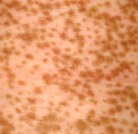
2. The other way new pigment can begin is when melanocytes from the outer edges of the depigmented area migrate inward, slowly closing the depigmented area from the outside.
| Before | After |
 |
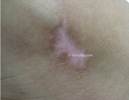 |
Freckling, or repigmenting with freckles, is generally a faster process, but new pigment is new pigment!
It's a great idea to take pictures of the depigmented areas when you begin treating. If you ever become discouraged with your progress, once you go back and see where you began, you will most likely be quite surprised and encouraged!
Many VSI members have posted pictures of their treatment progress in the member photo galleries. If you ever question how well treatments work, you should visit the galleries.
"Before" and "After" photos above used with permission from Dr. Anantha Prasad Holla
Director:
MelanoSite - Center of Advanced Vitiligo Treatment and Collaborative
Pigment Cell Research based in Delhi and Mangalore.
Medical News Updates
Highlights of recently-published medical
articles on vitiligo and its treatments
Long-term Narrowband UVB (NB-UVB)
Use Believed Safe in Treating Vitiligo
NB-UVB is an established, effective treatment for vitiligo. Its safety as a long-term treatment, however, has not been studied. For that reason, in the absence of established treatment caps for NB-UVB, the suggested limit for skin types I-III has arbitrarily been set at 200 treatments to minimize the risk of nonmelanoma skin cancer (NMSC).
 This limit poses problems for many vitiligo patients, as more than 12-24 months of treatment, or more than 200 treatments, are often required for repigmentation. A recent review of patient experience by doctors at University of California, San Francisco (UCSF), now suggests that this limit may be unnecessarily low. This limit poses problems for many vitiligo patients, as more than 12-24 months of treatment, or more than 200 treatments, are often required for repigmentation. A recent review of patient experience by doctors at University of California, San Francisco (UCSF), now suggests that this limit may be unnecessarily low.
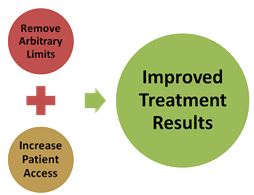 The doctors in this review have been treating vitiligo patients with NB-UVB for nearly a decade and conducted a retrospective review of 10 of their current NB-UVB vitiligo patients. Despite having received from 201 to 774 NB-UVB treatments over a period of 33 to 93 months, none of these patients have developed NMSC. The doctors in this review have been treating vitiligo patients with NB-UVB for nearly a decade and conducted a retrospective review of 10 of their current NB-UVB vitiligo patients. Despite having received from 201 to 774 NB-UVB treatments over a period of 33 to 93 months, none of these patients have developed NMSC.
They pointed out that, after years of experience reviewing the available follow-up data drawn from all dermatology patients treated with NB-UVB, the general consensus is that NB-UVB does not significantly increase the risk of NMSC compared with the general population.
The UCSF physicians further commented that recent evidence suggests that topical pimecrolimus (Elidel) and/or tacrolimus (Protopic), which are commonly prescribed as adjuncts to NB-UVB, also have not shown an increased risk of NMSC. Therefore, the combination of NB-UVB with these topical agents should not have a cumulative carcinogenic effect.
The researchers concluded that NB-UVB is likely to be a safe long-term option, and because vitiligo patients will likely require more visits over a longer period of time, it is recommended that the NB-UVB guidelines be re-evaluated and that more long-term follow up data be gathered.
Family History of Both Vitiligo and Psoriasis Appears to Increase
Risk of Autoimmune Disease, Heart Disease and Hypertension.
A study of 154 Italian vitiligo patients showed that those patients who also had psoriasis faced a greater chance of also having family history of cardiovascular disease and hypertension. They also found that vitiligo patients with a family history of both vitiligo and psoriasis had nearly a 50% chance of having celiac disease, lupus, megaloblastic anemia, and allergic rhinitis, all autoimmune disorders suspected to be linked to vitiligo. For those with both vitiligo and psoriasis, but no family history for either skin disease, the risk of these disorders went down to 21%.
 For those with a family history of vitiligo or psoriasis or both, the chance of having a family history of cardiovascular disease and hypertension increased. Though the trend did not reach statistical significance in this study, they did report that: For those with a family history of vitiligo or psoriasis or both, the chance of having a family history of cardiovascular disease and hypertension increased. Though the trend did not reach statistical significance in this study, they did report that:
A family history of cardiovascular disease was present in:
- 10% of 52 patients with vitiligo and a family history of vitiligo;
- 13% of 15 patients with vitiligo as well as a family history of both vitiligo and psoriasis;
- 18% of the 16 patients with vitiligo and a family history of psoriasis.
Similarly, a strong family history of hypertension was present in:
- 4% of vitiligo patients,
- 8% of those with both vitiligo and a family history of vitiligo,
- 13% with vitiligo and a family history of both psoriasis and vitiligo,
- 25% of vitiligo patients with a family history of psoriasis, and
- 26% of patients carrying diagnoses of both vitiligo and psoriasis but no family history of either skin disease.
The researchers also looked at diagnosed psychiatric disorders. They found:
- zero prevalence of diagnosed psychiatric disorders in patients with vitiligo with or without a family history of vitiligo,
- 7% prevalence in those with vitiligo and a family history of both vitiligo and psoriasis,
- 6% in those with vitiligo and a family history of psoriasis, and
- 5% in patients with both vitiligo and psoriasis.
Editor’s Note: Recent research has reported that vitiligo and psoriasis share a gene on chromosome 1. Another group of researchers in China and Canada recently reported that both vitiligo and psoriasis share a second common genetic locus linked to the major histocompatibility complex (MHC) on chromosome 6. The MHC locus is one of the extensively studied regions in the human genome. Large-scale studies have identified a number of genetic variants that increase the risk of a variety of autoimmune disorders, including multiple sclerosis, Type 1 diabetes, systemic lupus erythematosus, ulcerative colitis, Crohn’s disease, and rheumatoid arthritis. Earlier studies had also reported that MHC loci are likely to play some important roles in psoriasis and vitiligo.
Research & Clinical Trials
New Clinical Trial in Massachusetts!
A phase-II, randomized, placebo-controlled trial
of simvastatin in generalized vitiligo
Principle Investigator: John E. Harris, MD, PhD
Study Location:
UMass Memorial Medical Center in Worcester, MA
A research trial at UMass is studying whether simvastatin, a common cholesterol medication, is useful in treating vitiligo. The study includes taking either this medication or a placebo and visiting UMass 8 times over a period of 6-7 months. You will be compensated for your time and receive free parking.
You may be eligible if
you are a patient with vitiligo and are:
- A male between 18 – 64 years of age
- Not currently taking a statin medication for heart disease
If you are interested in participating or would like more detailed information:
Call: (508) 856-2800, or Email: [email protected] |
Major Expansion of Vitiligo Genetics Project
University of Colorado
Health School of Medicine
Update!
International Study to Find Vitiligo Genes
Additional Patient Volunteers Needed from the
USA and Canada Needed
Scientists with the international VitGene Consortium project spanning 18 countries are working to understand the biology of vitiligo so that more effective vitiligo treatments can be designed. Thanks to your involvement, the first phase of this research project has been very successful, discovering many vitiligo genes, resulting in real breakthroughs in our understanding and opening new doors to developing potential new treatments.
We now plan to expand these studies to discover additional vitiligo genes, giving us even more targets for treatment. That means we need to double the number of patients. Our new goal is to enroll 3000 additional Caucasian (white) vitiligo patients over the next two years. Your help is essential.
If you are from the USA or Canada and have not previously taken part, your participation is vitally needed. Please complete the questionnaire below then email directly to Dr. Richard Spritz at the University of Colorado School of Medicine using the email address provided at the end of the questionnaire.
Your personal information, by law,
will be kept private and will not be sold or disclosed.
Join with us to work for a vitiligo-free future!
|
Patients and Controls Invited to
Participate in Online Vitiligo Survey
Sponsored by Nanette B. Silverberg, MD
Departments of Dermatology,
St. Luke's-Roosevelt and Beth Israel Medical Centers, New York, NY
Dr. Silverberg is conducting a survey to review medical, genetic,
psychological and nutritional factors that may cause or exacerbate vitiligo.
- Individuals with vitiligo that have been previously diagnosed
by a physician are welcome to contribute to this survey.
- Friends and family without vitiligo are also encouraged to
respond as control subjects. Just answer the questions that
are applicable.
- The survey will not include any personal information that may
identify you to the public.
Click Link to Select the Appropriate Survey Below
OR
|
Volunteers Needed for NB-UVB
and Epidermal Grafting Trial
Effect of Narrow-Band UVB on Repigmentation
Following Suction-Blister Epidermal Grafting in Vitiligo
Principle Investigators: Dr. Amit Pandya & Dr. Flora Kim
Location: University of Texas Southwestern, Dallas, Texas
Study Description: Open to patients with bi-lateral vitiligo.
Patients will be treated with 1 cm suction-blister grafts to affected areas to determine if narrow-band ultraviolet B phototherapy significantly improves pigment spread following the grafting procedure compared to grafting alone. The study may last up to 9 weeks, which includes 8 weeks of NB-UVB administered 3 times a week. All patients will receive grafting and follow up visits for no charge; however, they (or insurance) will be billed for phototherapy treatments.
Eligibility Criteria: Adult patients over the age of 18, symmetrical bilateral lesions (measuring at least 3x3cm)
Criteria Exclusion: Pregnancy, breast-feeding an infant, history of skin cancer, history of photosensitive disorder, history of taking photosensitizing medications, history of recent phototherapy or topical therapy within one month prior to enrollment, history of organ transplantation, presence of the Koebner phenomenon
Contact: If you meet the above criteria and are interested in participating or would like more information, please contact Dr. Flora Kim at [email protected] |

Camp Discovery
In 1993, the American Academy of Dermatology (Academy) started Camp Discovery with a single camp location serving about 50 kids at Camp Knutson in Crosslake, Minnesota. Little did they know how much Camp would grow over the next 19 years. Camp Horizon began in 1995; Teen Camp followed in 1998 and last year we introduced Camp Reflection in Washington State.
This year the Academy is proud to offer six camping sessions for young people with chronic skin conditions who are between the ages of 8 and 16. Under the expert care of dermatologists and nurses, Camp Discovery gives campers the opportunity to spend a week with other young people with skin conditions, while participating in everything from swimming and fishing to horseback riding to lots of camp games and just plain fun!
There is no fee to attend this very special camp. Full scholarships, including transportation, are provided by the Academy through generous donations from its members, outside organizations and individuals. All campers must be referred by their dermatologists.
2012 Dates:
- June 24 – 29, Camp Little Pine in Crosslake, Minnesota (ages 10 – 14)
- June 25 – 29, Camp Reflection in Carnation, Washington (ages 8 – 16)
- July 8 – 13, Camp Big Trout in Crosslake, Minnesota (ages 14 – 16)
- August 12 – 17, Camp Liberty in Hebron, Connecticut (ages 8 - 16)
- August 5 – 10, Camp Dermadillo, Burton, Texas (ages 9 – 15)
- August 11 – 18, Camp Horizon, Millville, Pennsylvania (ages 8 – 13)
Referral forms will be available in January and the **application deadline is April 15, 2012. For more information about attending or volunteering, please visit the Camp website at www.campdiscovery.org, or contact Janine Mueller at 847-240-1737 or by email: [email protected].
NOTE** This article first ran in the VSI Winter 2011 Newsletter. We are running it again even though the deadline will be very close or past by this time. We are told they will continue accepting applications as long as space is available.
To read a firsthand report from one of our members
who attended Camp Discovery, Click Here |

Earn funding for VSI 3 Ways when you Shop!
Please keep VSI in mind when you do any of your online shopping
AMAZON SHOPPING
Amazon.com has all kinds of items in addition to books. As long as shopping is done through this link, Amazon.com, or from the Amazon box on our Community Home Page, VSI will earn fees, based on a percentage of the sale*. The more items members buy, the higher the percentage! Our Vitiligo Library and Store, containing books, articles and products for those with vitiligo, is also powered by Amazon.
iGIVE SHOPPING
iGive.com is another program with an online shopping mall with over 700 stores where you can shop and earn VSI a percentage. Let friends and family know about iGive so they can support VSI, too. You do have to register for iGive. Once you've registered, you can either shop directly through their "mall" on iGive's website or by downloading their new button, which makes it even easier. iGive also has a search function powered by Yahoo at isearchigive.com (or through the button) that earns VSI a penny per search. The power of numbers makes this also an effective way to support VSI.
GOODSEARCH SHOPPING
GoodSearch and Goodshop are similar to iGive. Goodshop has some different stores (like Target), though, and also offers coupons and often a higher percentage to VSI. Goodsearch also offers a toolbar. Through another affiliate, GoodDining, participating restaurants offer VSI a percentage of your meal purchases. If you provide reviews of the restaurants afterwards, we earn even more!
* Vitiligo Support International Inc., (VSI) is a participant in the Amazon Services LLC Associates Program, an affiliate advertising program designed to provide a means for sites to earn advertising fees by advertising and linking to Amazon.com. |
Support Vitiligo Education and Stay Connected!
There is no other source available that offers the comprehensive vitiligo education and patient support that VSI does. We are asked to respond in many ways to those who come to us for guidance, information and support. As we depend on donations from the public to meet these demands, your gift is critically needed.
For an annual donation of $25 or more,
become a Supporting Member
and begin to receive your additional benefits.
Already a Supporting member? An additional donation
is welcome and gratefully appreciated.
Click Below to Make a General Donation with PayPal.

At this time VSI is unable to integrate PayPal with the website Supporting Membership function; however, we can process this manually. If you would like to upgrade to or renew a Supporting Level Membership using PayPal,
please contact VSI at [email protected].
|
|








 People with CD cannot tolerate gluten, a very common gluey protein found in such grains as wheat, barley and rye. Other grains containing gluten are bulgur, durham, farina, graham flour, kamut, matzo meal, semolina and triticale. It is pervasive in a wide range of foods, including food additives in certain condiments such as ketchup. It may also be found in everyday products such as medicines, vitamins, and lip balms.
People with CD cannot tolerate gluten, a very common gluey protein found in such grains as wheat, barley and rye. Other grains containing gluten are bulgur, durham, farina, graham flour, kamut, matzo meal, semolina and triticale. It is pervasive in a wide range of foods, including food additives in certain condiments such as ketchup. It may also be found in everyday products such as medicines, vitamins, and lip balms.  In another study, university researchers in Turkey looked at 55 children and adolescents diagnosed with CD over a six-year period to see if there were any skin conditions associated with CD. They observed a higher than normal prevalence rate of several skin conditions, including vitiligo. Over 9% of the CD patients had vitiligo, a greater frequency than seen in the general population (½ - 1%). Interestingly, the vitiligo appeared only in those children and adolescents who were not following a strict gluten-free diet. In fact, none of the skin abnormalities observed in the CD study patients were observed in those following a gluten-free diet.
In another study, university researchers in Turkey looked at 55 children and adolescents diagnosed with CD over a six-year period to see if there were any skin conditions associated with CD. They observed a higher than normal prevalence rate of several skin conditions, including vitiligo. Over 9% of the CD patients had vitiligo, a greater frequency than seen in the general population (½ - 1%). Interestingly, the vitiligo appeared only in those children and adolescents who were not following a strict gluten-free diet. In fact, none of the skin abnormalities observed in the CD study patients were observed in those following a gluten-free diet. CD has been reported to be associated with several other autoimmune disorders, including Type 1 diabetes, autoimmune liver disease, rheumatoid arthritis, Addison’s disease, and Sjogren’s syndrome. Could CD also trigger vitiligo, another autoimmune disease? It is a reasonable question to ask given what we know to date.
CD has been reported to be associated with several other autoimmune disorders, including Type 1 diabetes, autoimmune liver disease, rheumatoid arthritis, Addison’s disease, and Sjogren’s syndrome. Could CD also trigger vitiligo, another autoimmune disease? It is a reasonable question to ask given what we know to date. We know from federally-funded genetics research that the gene
NLRP1 (formerly known as NALP1), has been confirmed as being
associated with vitiligo, as well as with celiac disease, Addison’s
disease, systemic sclerosis, and lupus, and with type 1 diabetes
in two out of three studies. We recently learned from a newly released study about another common gene, LPP, which is associated with vitiligo, celiac disease and rheumatoid arthritis. Perhaps these genes may be involved in mediating vitiligo and CD.
We know from federally-funded genetics research that the gene
NLRP1 (formerly known as NALP1), has been confirmed as being
associated with vitiligo, as well as with celiac disease, Addison’s
disease, systemic sclerosis, and lupus, and with type 1 diabetes
in two out of three studies. We recently learned from a newly released study about another common gene, LPP, which is associated with vitiligo, celiac disease and rheumatoid arthritis. Perhaps these genes may be involved in mediating vitiligo and CD.
 Research has shown that a significant percentage of children and adults who tested positive for celiac disease had minimal or no symptoms prior to being tested. However, familiarizing yourself with the symptoms is very important as you may otherwise miss important clues that could lead to early diagnosis.
Research has shown that a significant percentage of children and adults who tested positive for celiac disease had minimal or no symptoms prior to being tested. However, familiarizing yourself with the symptoms is very important as you may otherwise miss important clues that could lead to early diagnosis.



 This limit poses problems for many vitiligo patients, as more than 12-24 months of treatment, or more than 200 treatments, are often required for repigmentation. A recent review of patient experience by doctors at University of California, San Francisco (UCSF), now suggests that this limit may be unnecessarily low.
This limit poses problems for many vitiligo patients, as more than 12-24 months of treatment, or more than 200 treatments, are often required for repigmentation. A recent review of patient experience by doctors at University of California, San Francisco (UCSF), now suggests that this limit may be unnecessarily low. The doctors in this review have been treating vitiligo patients with NB-UVB for nearly a decade and conducted a retrospective review of 10 of their current NB-UVB vitiligo patients. Despite having received from 201 to 774 NB-UVB treatments over a period of 33 to 93 months, none of these patients have developed NMSC.
The doctors in this review have been treating vitiligo patients with NB-UVB for nearly a decade and conducted a retrospective review of 10 of their current NB-UVB vitiligo patients. Despite having received from 201 to 774 NB-UVB treatments over a period of 33 to 93 months, none of these patients have developed NMSC.